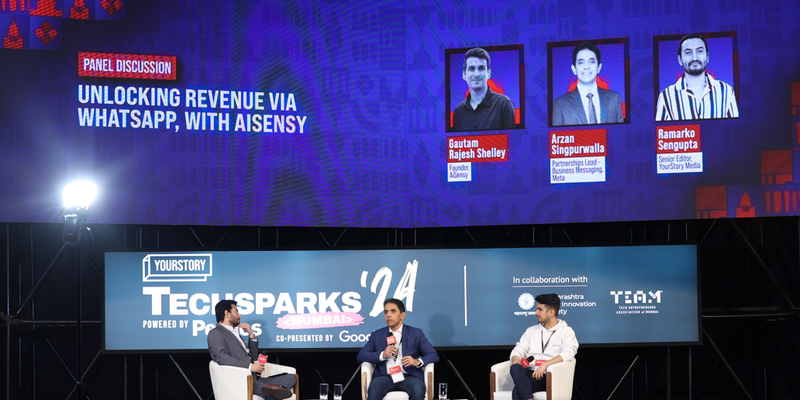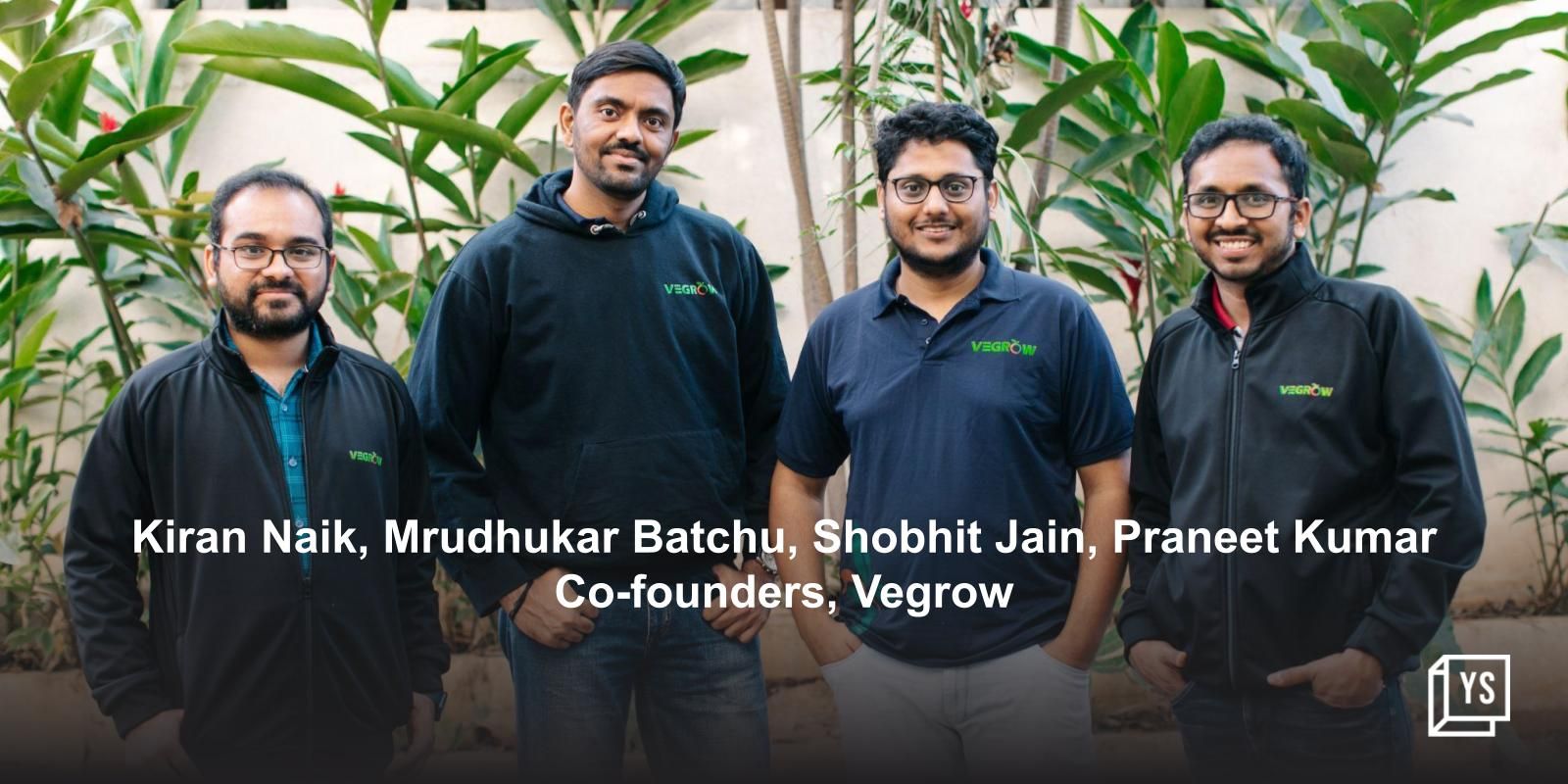Druva goes big with bridging a crucial, but overlooked customer need - backup for your laptop
Sunday August 01, 2010 , 15 min Read
TechSparks Special

According to Gartner, one laptop is stolen every 53 seconds. Dell initiated a study in 2008 and found that 12,000 laptops are stolen in U.S. airports every week and 70% of them never reach their owners. There are estimates that laptop theft is increasing 40% a year. According to a survey done in India 90% of laptops are lost or stolen during travel. In India, about 97% of stolen PCs are never recovered, and 57 percent of corporate crimes are linked to them. If there is a compelling backup need, laptop clearly presents one. An Indian product company Druva (known as Druvaa earlier) created a backup software along with data deduplication (deleting duplicate data when backing up) and has achieved roaring success by pocketing customers like NASA, Xerox, Amway, Indian Oil, Louis Vuitton, Kotak, Sharekhan, to name just a few. YourStory was interested in knowing how this company took shape. We share Druva’s story with you.
Druva Software provides continuous data protection, data deduplication, and disaster recovery solutions. Druva offers two products: Druva inSync is fully automated laptop backup software, which protects corporate data for office and remote users, and Druva Phoenix is an enterprise class product for non-disruptive disk-to-disk backup for local and remote servers. In April this year, Druva raised $5 million its latest round of funding from Sequoia and Indian Angels Network after three years of its founding in 2007.
The team of Ramani Kothandaraman, cofounder and COO, and Milind Borate, cofounder and CTO, along with Jaspreet Singh, cofounder and CEO, make an awesome threesome. If a company can be crafted and built solely on meeting customer needs and grow from strength to strength, Druva is a star in that category. Satisfied customers and the second round of investor interest of a high magnitude hold testimony to Druva’s engaging customer journey. The customer base of 400+ in 26 countries is an example of good execution. It provides a leap of faith for others out there not yet willing to take that extra risk.
In a chat with Venkatesh Krishnamoorthy, chief evangelist of YourStory, Jaspreet Singh talks about founding of Druva, its outlook, and its journey so far.
The story rolls out here...
Inspiration for Druva
Starting with food

We all [Jaspreet, Ramani, and Milind] worked in Veritas before we started Druva. None of us know each other before unlike friends coming together to start a business. I passed out of IIT Guwahati in 2004 but in 2003 was offered internship with Fraunhofer-Gesellshaft Labs in Germany, which developed MP3, MPEG formats for music players. There was lot of collaboration between German universities and other universities. I got to make a lot of German friends, one Dutch was my roommate, and my guide was African-American. I used to cook Indian food for all my friends and very well indeed. So my food became so popular that people craving for home-made food used to give me money to prepare food. So I tried to make and sell food. We were selling parathas for €10 or so. But we were redflagged by the hostel authorities. So in one and half months, I learned about preparing, selling, and planning and also how to make profits and manage books -- about creating something. It was a thrill in the spine!First job
One of my friends was from BHU working in TCS, and he wanted to start on his own when he went back to India after the internship. So, both of us realized the value of creating something on our own during a talk, sitting under moon light. When I came back, I joined a startup by legendary Kanwal Rekhi (President of Novell). I was extremely lucky to work under exceptionally good people there who nurtured me. I have never been refused anything in jobs except in a couple of job interviews so far. Due to peer pressure, higher salary or whatever, I decided to switch to a multinational company.
Stint at Veritas
Veritas would not recruit graduates for its core groups. I was the only graduate selected at an embarrassing salary. The condition was that if I passed their test, they would pay me a postgraduate salary. They did not interview me but if given a chance and I proved myself in the test, they would give a postgraduate salary. That happened and I was in their Veritas Advanced Systems Group, one of their core groups. This group had 60 people churning $125 million revenues per quarter. But I soon realized that my talent is getting wasted here! There was no fun working for an MNC. Nothing depended on you and all work that is done at MNCs was perhaps started ten years ago.
Druva is born

Milind was working as the Technical Director of Veritas. He was president of a committee and he reached a point where he did not want to take job interviews further. He wanted to create something in life now. Ramani was with one of the HP Veritas partnership concern. Three of us used to engage in conversations. During such conversations we realized that the demand is going to be high for disaster recovery software, especially for banks and financial institutions. There was no quality software that would meet their need. Ramani and Milind gave me an opportunity to write good codes and we started working on the idea.The Druva journey begins
We quit Veritas to create that kind of software. We quit in May 2007 and started working from August to create this software. We showed it to Saint Gobain and since I was the young guy, I was sent places for sales on the field. It was a thrill learning having your own company. The common thought in three of us was that we wanted to create something on our own in India that the country is proud of ten years down the line.
Indian Angel Network funding
We just created the disaster recovery product for servers, which costed Rs. 10 lakhs per licence. Laptop backup just happened. We were evaluated by Indian Angel Network based on our product. One of the people was CEO of Microsoft India and they saw potential for our product in future. We got funded.
Indian Product Company
Challenges
Soon after we realized that the money we raised was not sufficient to build a great product. But still we could build a profitable business. Indian companies were not fond of buying Indian software. It was tough. Some guys even asked us bribe to have their company buy our software. Some companies would try out new technology but willing to pay and their only concern is that the quality of the product should be really good. We were in a way recreating what Veritas has already done.
Getting customers
There were two challenges. Indian companies don’t buy Indian software and it is a tough market. We took a dual approach. We planned to create something that is not just better but 10 times better. We acquired key customers, a couple of them especially internationally.
Laptop backup
In our interactions with customers, we came to understand an important pain point -- laptop backup. PCs and laptops are acquired in large numbers now. But PC backup is solved. The person using laptop wants the backup to be silent without disturbing his work. He needs a good backup software, which would take care of his needs. We worked on it and came up with extremely good software that had key features. We priced it knowingly or unknowingly three times the cost of Veritas. Not many people have complained about the price so far. Quality is good and the product is good. So for us, this product has become profitable proposition.
Duplication of data on laptops
Two years ago, we realized that 80% of the data on laptops is duplicate. So we put in a technology to remove duplication before backup happens. When some customers tried this the software really worked and the customers enjoyed working with this software.
Website helps to get good business
Luckily, we built a great website. This helped customers coming in automatically. So when they saw that the software worked, they wanted to get it immediately on their servers. So we created a code overnight to enable online delivery of the product. So we bought numbers to support other countries and hired a support guy. We were shocked to see sales of Rs. 2 to Rs. 3 lakhs from a customer.
The business that covered costs for six of us using three customers took off to seven customers a month. The rate just increased exponentially. We have now 400+ customers from 26 countries.
International customers without a direct sales pitch
We got customers like Xerox, Schlumberger, NASA, CGI, Bechtel without making any sales pitch. They came just through the website. They wouldn’t have purchased our products had we approached NASA or Xerox. They liked our website and wanted to purchase our product.
Marketing
Honestly, we didn’t have funds to spend on social media or others before funding. Because building the product itself was very very costly. Our only marketing tool was our website. Now after funding, we have hired a PR agency and have started a calling campaigns to drive sales.
The initial model of funds
Bootstrapping
We bootstrapped the company. We put in an initial capital of Rs. 26 lakhs. We had to buy hardware and had to test the product. No customer would buy an untested product. Then we had angel investment of Rs. 1 crore.
Getting in investors
Getting investors is not a question of profitability (Druva had a 300% year-on-year growth) but is that of cash flow. Although we put in Rs. 26 lakhs, by September we realized that we need good amount of money to run this business. If you see Adobe, they were not profitable for the first seven years. Being an Indian company we had to be profitable, say, within six to eight months. So by September 2007 we started, by January 2008 we were funded and by September 2008 we were profitable.
International money would come in, say, 15 to 20 days. But customers started delaying payment. So it was the question of cash flow. So you need to have money in the bank for the next two to three quarters of planning. What you typically had in hand now is the collection from the last two quarters, which is obviously not enough to run the next three quarters.
We grew 300% quarter on quarter and 16 times annually in 2009 and six times annually in 2010. We then got funded by Sequoia now and that would help us survive the next two years before we need another injection of cash.
Raising money earlier is good. If you have good investors, then you have control over your product. That way, Sequoia and IAN are good investors.
Investor value to company
IAN helped us a lot. Rehan yar Khan and Rajan Anandan helped us initially. Sequoia has experience working with lot of startups. So they know how to get sales help and marketing help. They helped us hire people and also with marketing contracts. So it was a lot of help.
Druva Products -- inSync and Phoenix
InSync -- backup for laptops, especially people who are travelling. If you have shutdown your laptop last time, the backup software should coexist to record your actions. We have put in lot of features to make this backup simple and straightforward.
Phoenix -- server backup reinvented. We are trying lot of things. We will spend more time before launching Phoenix properly. Our aim to simplify and empower the server backup. Deduplication and ware optimization are add-ons to the server backup.
It is a huge market. $3 billion of backup software sold last quarter. And Veritas enjoys 25% of this market. It’s also a noisy market. It is tough to cut through the noise and sell your product.
Position in the Indian market
Indian market is very small -- about $50 million. We would be able to make $1 million this year and $4 to $5 million next year. We plan to capture 10% of the market in the next two to three years.
Early team
It is not the cofounders but the early team of six to seven people who are instrumental in the success of our company. One of them happens to be a non-Indian, a Spaniard. He was the eighth employee in the company. Complementarity of cofounders is also essential. Two of us were selling and one was creating. We have taken our positions clearly well. Ramani now handles legal, financial, operational aspects. Milind is the core technology guy. I interface with Milind and the sales team. I am a pure sales guy.
We brainstorm and talk among each other a lot. We go to select restaurants whenever we need to talk having long lunches or dinners. Definitely we brainstorm a lot. It’s always a challenge. I have ten challenges to face in the next ten days.
Ensuring innovation
Innovation starts from openness. Anybody can post an idea even if he is junior level. From there, we try to help people speak up and give them free hand. We stay close to our customers and we hear them properly. We pickup ideas very fast and tap them. We deliver them fast. Customers also bring in innovative ideas.
We are launching [email protected] where people and post and vote ideas. Then we will pick them up.
We are getting thrilled about building a good company.
Building a world class product company in India
Indian product companies will take a long time to achieve world class standards. The problem in India is when you sell a product, the customer wants you to offer some service and you get sucked into service. You need to carefully avoid this trap. We are very focused on the product. We don’t have too many people on the field and don’t hard sell. If you create something creative, something destructive, and which you will use yourself, that is world class product. We have been fair to our customers. We have built a decent software. What makes this software into a product is the wrapper around it such as service quality, knowledge base, and ability to mass distribute.
We are bringing in a lot of changes which you will see in the next eight months given our comfortable cash position now. We are working on a real mass consumption product. We hope it is really good. Your service cost should be a couple of basis points over sale. Otherwise you can’t scale. Your margin should be 20 to 25%. We are targeting 300% growth to continue for at least the next two years.
We will be $100 million company in three to four years.
Ecosystem in India
Lack of data security law in India and not being aware of data security standards are a problem.
There is a real need here. For example, FedEx, the courier company, has $2 million in IT budget. This kind of budget drives innovation. Indian companies like Ranbaxy and Airtel create the need and also budget for innovation. So these companies have been successful in catering to the real need of customers.
There are two types of companies in India -- manufacturing and services. Manufacturing sector cuts down on IT for survival and IT services companies want to do everything by themselves. Financial companies and media companies are good buyers and create the need to do something cutting edge.
Product companies don’t have financial support now. Employees waiting to go to good product companies hasn’t happened. They haven’t seen good exits in ESOPs. When Druva goes public, 20 of our employees in India would be able to make Rs. 1 crore.
Talent acquisition and retention
Druva has a good retention rate. A few employees have left us for personal reasons only. We haven’t lost a person whom we really want to have.
Acquiring talent was a big issue. We initially struggled a lot. We just sat down and figured out what can be scaled and what cannot be scaled. We didn’t want to struggle with that. We realized engineering cannot be scaled in India. Despite the numbers, the system is creating mediocre talent. Unless the guy is from IIT, that hunger for doing something great is not in them. So we wanted to empower the small number of engineers we have and support them with whatever they need like hardware and software to be productive.
QA and support can scale. We just hired them. We are a heavy buyer of software and heavy buyer of hardware. We do this to ensure that our small team is completely empowered.
We hire through the website. Consultants did not work well for us to hire engineers. When people read about us and show interest in working for us and approach us through the website, we immediately interview them. We really got some good hires like that.
Creating quality talent
People have to realize that MNC is not the way to grow. You get some initial good money but you are wasted. If you just test a software, there is no creativity involved. This trend will change once exits like nauki.com happen. They allowed people to make lot of money.
Measures to excite customers
We are strong on customer support. We have good people in support team. The customer wants a robust product that is easy to service. We made sure that our product works on the website. If the product does not work 24x7 on the website, the customer is not going to buy. We make sure that our product is awesome and our support is good. We have a good forum through our blog. We are active on support and make sure that we quickly test any problem and deploy the product into active mode.
Books
My reading list: Blink by Malcolm Gladwell, Don’t Let Me Think. Very interesting book on design. Another book that said human beings are irrational but predictable.
So Druva’s success is the result of a right mix of strategy, execution, customer focus, and talent retention. Druva’s journey should inspire product tech entrepreneurs to march ahead with confidence.










